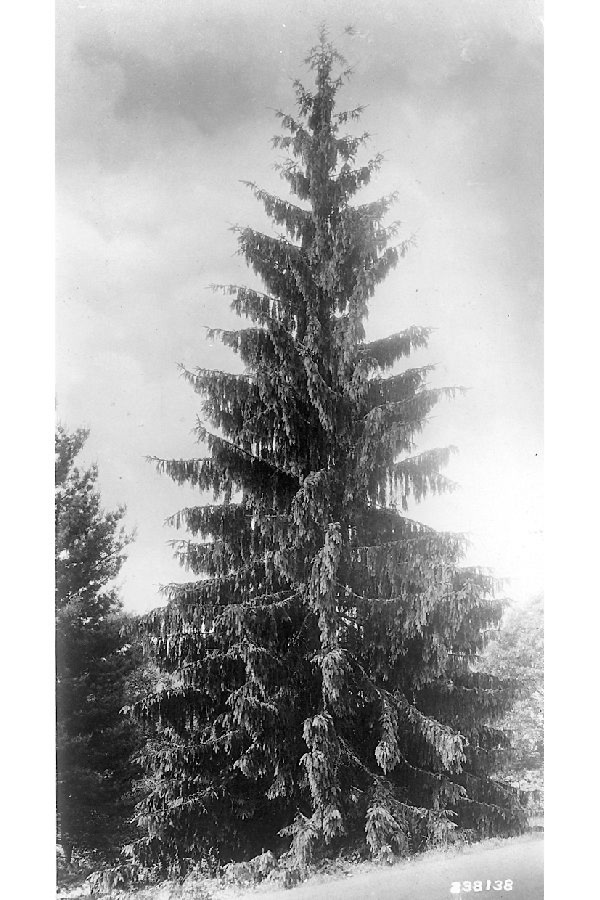Norway Spruce : Natural History
The tallest native tree to northern and central Europe Picea abies can grow to be 40 or 50 meters tall. The tallest reported Norway Spruce grows in Slovenia at a height of 62.26 meters and the second tallest grows in Germany’s Sächsische Schweiz National Park at 59.2 meters. As a result of soil and temperature conditions, the Norway spruce cannot grow as tall out of its native range. In areas like Northeastern Canada, the United States and Britain, it has an average height of 40 meters.
This coniferous evergreen has dark green needles and grayish brown bark, and grows conically, or to a point. Its most distinctive features are its pendulous branchlets, or small branches, that hang down loosely. It has whorled branches which droop at the lower levels but ascend at the uppermost level. This shape and flexibility allows the branches to bend down rather than crack under the pressure of snow. Oftentimes, the drooping action of the branches forces snow to simply slide off. This adaptive feature plays a significant role in its survival because its native northerly habitat receives a lot of snow. It can handle temperatures as low as -34.5 to -28.9 degrees Celsius.
The Norway Spruce can live healthily up to 200 years. In its northernmost range, it can survive up to 300-400 years. Out of its native range, like in Great Britain and North America, it usually does not live past 200 years old. Interestingly, a Norway Spruce in the Bavarian Forest of Germany has a cross-dated age of 486 years.

